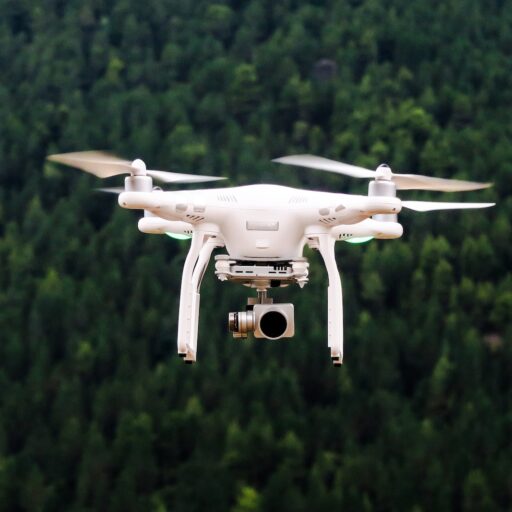Support our educational content for free when you purchase through links on our site. Learn more
9 Expert Tips for Maintaining & Upgrading Your FPV Drone in 2025 🚁
If you’re anything like us at Drone Brands™, your FPV drone isn’t just a gadget—it’s your ticket to breathtaking aerial adventures and adrenaline-pumping flights. But here’s a little secret: the thrill only lasts if you treat your drone right. Neglect maintenance or ignore upgrades, and you might find yourself grounded or worse, chasing a rogue quadcopter across a field. We’ve been there, trust us!
In this comprehensive guide, we’ll walk you through the best practices for maintaining and upgrading your FPV drone over time—from daily pre-flight rituals to deep firmware dives, and from smart hardware swaps to building your ultimate toolkit. Plus, we’ll reveal insider tips on when to upgrade versus replace, and how to keep your batteries happy and healthy for longer flights. Curious about the perfect field charging setup or how to troubleshoot those pesky video feed glitches? Stick around, because we’ve got you covered.
Key Takeaways
- Regular maintenance is essential: Daily inspections and post-flight care prevent costly failures and extend drone life.
- Firmware updates keep your drone sharp: Stay current with Betaflight, BLHeli, and OpenTX updates for peak performance.
- Strategic upgrades boost performance: Focus on motors, flight controllers, cameras, and antennas for the best ROI.
- Proper battery care is a game-changer: Use quality chargers and store batteries correctly to maximize lifespan.
- Having the right tools and community support makes troubleshooting and upgrades easier and more fun.
Ready to elevate your FPV game? Let’s dive in and make sure your drone stays as fearless as you are!
Table of Contents
- ⚡️ Quick Tips and Facts
- 🚀 The Evolution of Your FPV Beast: A Journey Through Time
- 🛡️ Why Bother? The Unsung Heroes of FPV Longevity
- 1. Pre-Flight Rituals: Your Drone’s Daily Check-up
- 2. Post-Flight TLC: Winding Down After the Thrill
- 3. Deep Dive into Maintenance: Keeping Your Quadcopter Pristine
- 4. Software & Firmware: The Digital Heartbeat of Your FPV Drone
- 5. The Art of Upgrading: Elevating Your FPV Experience
- 6. Essential Tools for the FPV Mechanic: Your Workshop Arsenal
- 7. Troubleshooting Common FPV Issues: When Things Go Wrong
- 8. Storage & Transportation: Protecting Your Investment
- 9. Community & Resources: Learning from the Best
- Conclusion
- Recommended Links
- FAQ
- Reference Links
Quick Tips and Facts
For those eager to dive into the world of FPV drones, understanding the basics of maintenance and upgrades is crucial. As experts at Drone Brands™, specializing in Aerial Adventures with Drones, we’ve compiled a list of quick tips and facts to get you started.
- Regular Maintenance: Check your drone’s components regularly, including propellers, motors, and the frame, to ensure they are in good condition.
- Battery Care: Store batteries properly, avoid overcharging, and keep them away from extreme temperatures.
- Software Updates: Regularly update your drone’s software and firmware to ensure you have the latest features and security patches.
- Practice Safety: Always follow safety guidelines and regulations when flying your drone, and be mindful of your surroundings.
For more information on drone safety and regulations, visit our Drone Laws and Regulations page.
The Evolution of Your FPV Beast: A Journey Through Time
As you embark on your FPV journey, it’s essential to understand the evolution of your drone over time. From its initial setup to future upgrades, your drone will undergo significant changes.
Initial Setup
When you first receive your drone, it’s crucial to follow the manufacturer’s instructions for setup and calibration. This includes:
- Frame Assembly: Assembling the frame and ensuring all components are securely attached.
- Electronic Speed Controller (ESC) Calibration: Calibrating the ESCs to ensure proper motor function.
- Radio Controller Setup: Configuring the radio controller and ensuring it’s paired with the drone.
Ongoing Maintenance
As you continue to fly your drone, regular maintenance is vital to ensure its longevity. This includes:
- Propeller Inspection: Regularly inspecting propellers for damage or wear.
- Motor Maintenance: Cleaning and lubricating motors to ensure smooth operation.
- Frame Inspection: Inspecting the frame for any damage or stress points.
For more information on drone maintenance, visit our Drone Brand Guides page.
Why Bother? The Unsung Heroes of FPV Longevity
So, why bother with maintenance and upgrades? The answer lies in the unsung heroes of FPV longevity: reliability and performance.
- Reliability: A well-maintained drone is less likely to experience failures or crashes, ensuring a safer and more enjoyable flying experience.
- Performance: Regular upgrades can significantly improve your drone’s performance, allowing for smoother flights and better maneuverability.
1. Pre-Flight Rituals: Your Drone’s Daily Check-up
Before each flight, it’s essential to perform a series of pre-flight checks to ensure your drone is airworthy.
Propeller Perfection: The First Line of Defense
- Propeller Inspection: Inspect propellers for any damage or wear.
- Propeller Balance: Ensure propellers are properly balanced to prevent vibrations.
Battery Health: Powering Your Adventures
- Battery Check: Check battery voltage and capacity to ensure they’re within safe limits.
- Battery Storage: Store batteries properly to prevent damage or degradation.
Visual Inspection: A Quick Scan for Trouble
- Frame Inspection: Inspect the frame for any damage or stress points.
- Electronic Inspection: Inspect electronics for any signs of damage or wear.
Radio Link & Failsafe: Trusting Your Connection
- Radio Controller Check: Check the radio controller for any issues or interference.
- Failsafe Setup: Ensure the failsafe system is properly configured to prevent accidents.
For more information on pre-flight checks, visit our Beginner Drones page.
2. Post-Flight TLC: Winding Down After the Thrill
After each flight, it’s essential to perform a series of post-flight checks to ensure your drone is properly wound down.
Cool-Down Protocol: Letting Your Components Breathe
- Cool-Down Time: Allow components to cool down to prevent overheating.
- Component Inspection: Inspect components for any signs of damage or wear.
Initial Inspection: Spotting Post-Crash Woes
- Frame Inspection: Inspect the frame for any damage or stress points.
- Electronic Inspection: Inspect electronics for any signs of damage or wear.
Battery Storage: The Key to Long-Term Power
- Battery Storage: Store batteries properly to prevent damage or degradation.
- Battery Maintenance: Perform regular battery maintenance to ensure optimal performance.
For more information on post-flight checks, visit our Drone Industry News page.
3. Deep Dive into Maintenance: Keeping Your Quadcopter Pristine
Regular maintenance is crucial to ensure your drone remains in pristine condition.
Cleaning Your FPV Drone: Dust, Dirt, and Debris
- Frame Cleaning: Clean the frame to prevent dirt and debris buildup.
- Electronic Cleaning: Clean electronics to prevent damage or corrosion.
Frame & Electronics: Gentle Yet Thorough
- Soft Brush: Use a soft-bristled brush to gently remove dirt and debris.
- Compressed Air: Use compressed air to blow away dirt and debris.
Motor Bells & Bearings: Smooth Spins, Happy Flights
- Motor Cleaning: Clean motors to prevent damage or wear.
- Bearing Lubrication: Lubricate bearings to ensure smooth operation.
Camera Lens & VTX Antenna: Crystal Clear Views
- Camera Lens Cleaning: Clean the camera lens to prevent dirt or debris buildup.
- VTX Antenna Inspection: Inspect the VTX antenna for any signs of damage or wear.
Component Inspection & Wear Assessment
Regularly inspect components for any signs of wear or damage.
Motor Health: Listen, Look, and Feel
- Motor Inspection: Inspect motors for any signs of damage or wear.
- Motor Sound: Listen for any unusual sounds or vibrations.
ESCs & Flight Controller: The Brains of the Operation
- ESC Inspection: Inspect ESCs for any signs of damage or wear.
- Flight Controller Inspection: Inspect the flight controller for any signs of damage or wear.
VTX & Receiver: Signal Strength and Clarity
- VTX Inspection: Inspect the VTX for any signs of damage or wear.
- Receiver Inspection: Inspect the receiver for any signs of damage or wear.
Antennas: The Unsung Heroes of Range
- Antenna Inspection: Inspect antennas for any signs of damage or wear.
- Antenna Orientation: Ensure antennas are properly oriented for optimal range.
Frame Integrity: Cracks, Bends, and Stress Points
- Frame Inspection: Inspect the frame for any signs of damage or wear.
- Frame Reinforcement: Reinforce the frame to prevent damage or stress points.
Wiring & Solder Joints: The Lifelines of Your Drone
- Wiring Inspection: Inspect wiring for any signs of damage or wear.
- Solder Joint Inspection: Inspect solder joints for any signs of damage or wear.
For more information on maintenance, visit our Drone Business Opportunities page.
4. Software & Firmware: The Digital Heartbeat of Your FPV Drone
Regular software and firmware updates are crucial to ensure your drone remains up-to-date and secure.
Flight Controller Firmware Updates (Betaflight, EmuFlight, ArduPilot)
- Firmware Update: Update the flight controller firmware to ensure the latest features and security patches.
- Configuration: Configure the flight controller settings for optimal performance.
ESC Firmware (BLHeli_S, BLHeli_32, AM32)
- Firmware Update: Update the ESC firmware to ensure the latest features and security patches.
- Configuration: Configure the ESC settings for optimal performance.
Radio Transmitter Firmware (OpenTX, EdgeTX)
- Firmware Update: Update the radio transmitter firmware to ensure the latest features and security patches.
- Configuration: Configure the radio transmitter settings for optimal performance.
VTX Firmware (SmartAudio, Tramp)
- Firmware Update: Update the VTX firmware to ensure the latest features and security patches.
- Configuration: Configure the VTX settings for optimal performance.
Why Update? New Features & Bug Fixes
Regular updates ensure you have the latest features and bug fixes, ensuring optimal performance and security.
For more information on software and firmware updates, visit our Drone Brand Guides page.
5. The Art of Upgrading: Elevating Your FPV Experience
Upgrading your drone can significantly improve its performance and capabilities.
When to Upgrade vs. Replace: A Strategic Decision
- Upgrade: Upgrade components to improve performance and capabilities.
- Replace: Replace components that are damaged or worn out.
Top 7 FPV Drone Upgrades for Performance & Durability
Here are the top 7 upgrades for performance and durability:
1. Motors: More Power, Better Efficiency
- Motor Upgrade: Upgrade motors for more power and better efficiency.
- Motor Configuration: Configure motor settings for optimal performance.
2. Flight Controller & ESC Stack: The Brains and Brawn
- Flight Controller Upgrade: Upgrade the flight controller for more features and better performance.
- ESC Upgrade: Upgrade ESCs for more power and better efficiency.
3. FPV Camera: See the World in HD
- Camera Upgrade: Upgrade the camera for better video quality and wider field of view.
- Camera Configuration: Configure camera settings for optimal performance.
4. VTX & Antenna: Range and Clarity
- VTX Upgrade: Upgrade the VTX for more power and better range.
- Antenna Upgrade: Upgrade antennas for better range and clarity.
5. Frame: Durability and Design
- Frame Upgrade: Upgrade the frame for better durability and design.
- Frame Configuration: Configure frame settings for optimal performance.
6. Propellers: The Unsung Performance Boosters
- Propeller Upgrade: Upgrade propellers for better efficiency and performance.
- Propeller Configuration: Configure propeller settings for optimal performance.
7. Receiver: Rock-Solid Link, Peace of Mind
- Receiver Upgrade: Upgrade the receiver for better range and clarity.
- Receiver Configuration: Configure receiver settings for optimal performance.
Beyond the Basics: Goggles, Radios, and Batteries
- Goggle Upgrade: Upgrade goggles for better video quality and wider field of view.
- Radio Upgrade: Upgrade radios for better range and clarity.
- Battery Upgrade: Upgrade batteries for more power and better efficiency.
Compatibility Considerations: Don’t Mix and Match Blindly
- Component Compatibility: Ensure components are compatible with each other.
- Configuration: Configure settings for optimal performance.
Soldering Skills: Your Best Friend in Upgrades
- Soldering: Develop soldering skills for better upgrades and repairs.
- Soldering Tools: Invest in soldering tools for better upgrades and repairs.
For more information on upgrades, visit our Drone Business Opportunities page.
6. Essential Tools for the FPV Mechanic: Your Workshop Arsenal
As an FPV mechanic, it’s essential to have the right tools for the job.
Basic Hand Tools: Screwdrivers, Pliers, Hex Keys
- Screwdriver: Invest in a good screwdriver for better upgrades and repairs.
- Pliers: Invest in pliers for better upgrades and repairs.
- Hex Keys: Invest in hex keys for better upgrades and repairs.
Soldering Station: The Heart of Your Workbench
- Soldering Station: Invest in a good soldering station for better upgrades and repairs.
- Soldering Iron: Invest in a good soldering iron for better upgrades and repairs.
Multimeter: Diagnosing Electrical Gremlins
- Multimeter: Invest in a good multimeter for better diagnostics and repairs.
- Multimeter Configuration: Configure multimeter settings for optimal performance.
Smoke Stopper: Your Drone’s Guardian Angel
- Smoke Stopper: Invest in a good smoke stopper for better safety and protection.
- Smoke Stopper Configuration: Configure smoke stopper settings for optimal performance.
Battery Checker & Charger: Power Management
- Battery Checker: Invest in a good battery checker for better power management.
- Battery Charger: Invest in a good battery charger for better power management.
Prop Balancer: Smooth Flights, Less Vibration
- Prop Balancer: Invest in a good prop balancer for better flight performance.
- Prop Balancer Configuration: Configure prop balancer settings for optimal performance.
For more information on tools, visit our Drone Brand Guides page.
7. Troubleshooting Common FPV Issues: When Things Go Wrong
As an FPV pilot, it’s essential to know how to troubleshoot common issues.
No Power/No Boot: The Silent Quad
- Power Issue: Check for power issues, such as a dead battery or faulty wiring.
- Boot Issue: Check for boot issues, such as a faulty flight controller or ESC.
Motor Not Spinning/Desyncs: The Stuttering Beast
- Motor Issue: Check for motor issues, such as a faulty motor or ESC.
- Desync Issue: Check for desync issues, such as a faulty flight controller or ESC.
Video Feed Issues (Static, Black Screen): Losing Your Vision
- Video Feed Issue: Check for video feed issues, such as a faulty camera or VTX.
- Signal Issue: Check for signal issues, such as a weak or lost signal.
Radio Link Problems: The Disconnected Pilot
- Radio Issue: Check for radio issues, such as a faulty radio transmitter or receiver.
- Link Issue: Check for link issues, such as a weak or lost link.
Flyaways & Unstable Flight: The Rogue Drone
- Flyaway Issue: Check for flyaway issues, such as a faulty flight controller or ESC.
- Unstable Flight Issue: Check for unstable flight issues, such as a faulty gyro or accelerometer.
For more information on troubleshooting, visit our Drone Industry News page.
8. Storage & Transportation: Protecting Your Investment
Proper storage and transportation are crucial to protecting your drone investment.
Long-Term Storage: Batteries and Components
- Battery Storage: Store batteries properly to prevent damage or degradation.
- Component Storage: Store components properly to prevent damage or degradation.
Travel Cases: Pelican, GPC, and Beyond
- Travel Case: Invest in a good travel case for better protection and transportation.
- Travel Case Configuration: Configure travel case settings for optimal performance.
Safety First: Lipo Bags and Fire Prevention
- Lipo Bag: Invest in a good lipo bag for better safety and protection.
- Fire Prevention: Take fire prevention measures, such as keeping a fire extinguisher nearby.
For more information on storage and transportation, visit our Drone Brand Guides page.
9. Community & Resources: Learning from the Best
The FPV community is a valuable resource for learning and improvement.
Online Forums & Discord Servers: Your Digital Pit Crew
- Online Forum: Join online forums for better learning and improvement.
- Discord Server: Join Discord servers for better learning and improvement.
YouTube Tutorials & Build Guides: Visual Learning at Its Best
- YouTube Tutorial: Watch YouTube tutorials for better learning and improvement.
- Build Guide: Follow build guides for better learning and improvement.
Local FPV Groups & Meetups: Flying with Friends
- Local Group: Join local FPV groups for better learning and improvement.
- Meetup: Attend meetups for better learning and improvement.
For more information on community and resources, visit our Drone Business Opportunities page.
Conclusion

Maintaining and upgrading your FPV drone is not just a chore—it’s an ongoing adventure that keeps your flying experience fresh, safe, and exhilarating. From the daily pre-flight checks to the deep dives into firmware updates and strategic hardware upgrades, each step ensures your quadcopter remains a reliable companion in the skies. Remember, neglecting maintenance can lead to unexpected failures, while thoughtful upgrades can unlock new levels of performance and fun.
One question we teased earlier was about when to upgrade versus replace. Our expert advice? If your drone’s frame is cracked beyond repair or the flight controller is outdated and causing instability, replacement might be the smarter choice. But for most components—motors, ESCs, cameras, antennas—upgrading can breathe new life into your rig without breaking the bank.
We also touched on the social and practical benefits of field charging setups, as detailed in the Patshead blog. Carrying a large LiPo battery and a quality charger like the ISDT Q6 Plus can transform your flying sessions, letting you keep the fun going without lugging dozens of batteries. It’s a perfect example of how smart maintenance and upgrades go hand in hand.
In summary, commit to regular maintenance, stay informed about firmware and hardware innovations, and don’t shy away from upgrading key components. Your FPV drone will reward you with longer flights, better control, and more immersive experiences. Happy flying! 🚁✨
Recommended Links
-
ISDT Q6 Plus Charger:
Amazon | ISDT Official Website -
XT60 6-port Balance Board:
Amazon -
JST Parallel Charging Cable:
Amazon -
Pelican Travel Cases:
Amazon | Pelican Official Website -
Recommended Books on FPV Drones:
FAQ

How often should I perform maintenance on my FPV drone?
Regular maintenance should be performed before and after every flight session. Pre-flight checks catch immediate issues like loose propellers or low battery voltage, while post-flight inspections help identify wear or damage caused during flight. Additionally, a more thorough maintenance routine every 10-15 flight hours is recommended, including cleaning motors, checking solder joints, and updating firmware.
Read more about “15 Must-Know Safety Tips for Flying FPV Drones in 2025 🚁”
What are the key components to upgrade for better FPV drone performance?
Motors, flight controller & ESC stack, FPV camera, VTX & antennas, and propellers are the most impactful upgrades. Upgrading motors can provide more thrust and efficiency, while a modern flight controller with updated firmware enhances flight stability and features. High-quality cameras and VTX systems improve video clarity and range. Don’t overlook propellers—they’re the unsung heroes of smooth flight.
Read more about “How to Choose the Perfect FPV Drone for Your Needs in 2025 🚁”
How can I extend the battery life of my FPV drone?
Battery longevity depends on proper charging, storage, and usage. Always use a quality balance charger like the ISDT Q6 Plus, avoid fully discharging LiPos below 3.3V per cell, and store batteries at about 3.8V per cell in a cool, dry place. Avoid exposing batteries to extreme temperatures and physical damage. Regularly inspect batteries for puffing or damage and retire them if necessary.
Read more about “How to Set Up & Calibrate Your FPV Drone for Peak Performance 🚀”
What tools do I need for regular FPV drone maintenance?
A solid toolkit includes:
- Precision screwdrivers and hex keys for assembly/disassembly
- Soldering station with fine tips for repairs and upgrades
- Multimeter for electrical diagnostics
- Smoke stopper to protect electronics during testing
- Battery checker and charger for power management
- Prop balancer to reduce vibrations and improve flight stability
Read more about “Top 15 Military Drone Manufacturers Shaping Warfare in 2025 🚁”
How do I troubleshoot common issues with FPV drones?
Start by isolating the problem:
- No power? Check battery voltage, wiring, and connectors.
- Motors not spinning? Inspect ESCs, motor wiring, and flight controller outputs.
- Video feed issues? Check camera, VTX, antenna connections, and frequencies.
- Radio link problems? Verify transmitter/receiver bindings and antenna orientation.
- Unstable flight? Calibrate sensors, check firmware, and inspect frame integrity.
Read more about “Can I Build My Own FPV Drone or Buy Pre-Made? 🤔 (2025)”
What firmware updates are essential for FPV drone upgrades?
Keep your flight controller firmware (Betaflight, EmuFlight, ArduPilot) and ESC firmware (BLHeli_S, BLHeli_32) updated to benefit from performance improvements and bug fixes. Update your radio transmitter firmware (OpenTX, EdgeTX) and VTX firmware (SmartAudio, Tramp) to unlock new features and ensure compatibility. Always back up your configurations before updating.
How can I improve the durability of my FPV drone frame?
Choose frames made from high-quality carbon fiber with reinforced stress points. Regularly inspect for cracks or bends and replace damaged parts immediately. Consider frames with modular designs for easier repairs. Using vibration dampeners and balanced props also reduces stress on the frame.
Reference Links
- Betaflight Firmware
- BLHeli ESC Firmware
- ISDT Official Website
- Pelican Cases
- Multistar Batteries at HobbyKing
- OpenTX Firmware
- Tramp VTX Firmware
- My FPV Quadcopter Field Charging Setup – Patshead.com Blog
- Drone Brands™ FPV Drones Category
- Drone Brands™ Drone Laws and Regulations
- Drone Brands™ Drone Industry News
- Drone Brands™ Drone Business Opportunities
- Drone Brands™ Drone Brand Guides
- Drone Brands™ Beginner Drones




